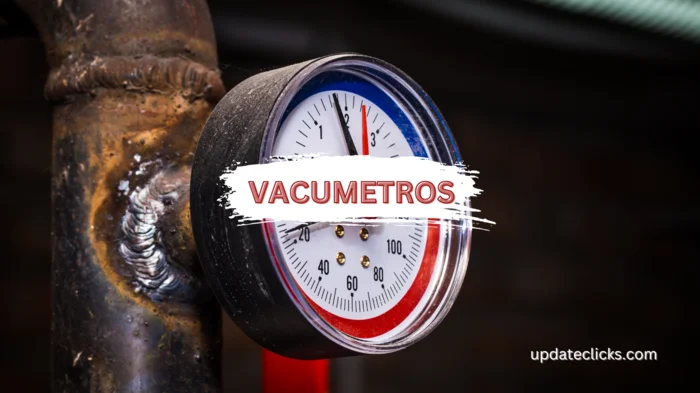
Vacuum technology is essential to numerous pitches, including industry and research. The efficiency and efficiency of vacuum systems be contingent on vacuum gauges. In order to ensure peak performance, these devices are essential for measuring and tracking vacuum levels. This article delves into the realm of vacuum gauges, examining their many varieties, customs, selection criteria, fixing, upkeep, and technological progresses.
Vacuum metros, often referred to as vacuum gauges, are essential instruments used in a wide range of sectors. They provide precise measurements of vacuum levels, guaranteeing both safety and optimum performance.
Introduction to Vacuums and Vacuum Gauges
Vacuum metros come in various forms; each designed to cater to specific measurement needs. Diaphragm gauges and Bourdon tubes are two examples of mechanical vacuum metros that are renowned for their dependability and affordability. In scientific research and semiconductor manufacture, high vacuum gauges, such as cold and hot cathode ionization gauges, are used for extremely low-pressure readings.
Piratic gauges, which measure thermal conductivity, are robust and suitable for a wide range of pressures. Capacitance diaphragm gauges are widely utilized in many sectors for accurate pressure readings due to their great precision.
The Use of Vacuum Gauges
Specialized equipment called high vacuum gauges are able to measure pressure levels between 10^-3 and 10^-9 Torn. They are necessary in places like space simulation chambers and cutting-edge scientific research facilities where maintaining a high vacuum is crucial. To produce accurate readings, these gauges make use of technologies like thermal conductivity and ionization.
Safety is paramount when working with vacuum systems and Vacuum metros. Always follow proper installation procedures to ensure a secure seal and accurate readings. Never exceed the gauge’s prescribed pressure limitations, and regularly check the apparatus for wear or damage. Make sure that all employees who handle vacuum equipment are taught on safe practices and correct operation.
Selecting the Appropriate Vacuum Gauge
A number of considerations must be made when choosing a vacuum gauge, including the intended pressure range, the need for precision, and compatibility with the vacuum system. Prominent producers provide a large selection of gauges, including digital and analog types, that are suited to certain applications.
It is essential to have a thorough understanding of the apparatus and how it works in order to guarantee the safe and efficient usage of vacuum metros. Regular calibration and maintenance are vital for accurate measurements. Users should also employ appropriate personal protective equipment (PPE) and be aware of environmental conditions that may affect the Vacuum metro’s performance. Providing comprehensive training to staff members and putting safety rules into place for dangerous situations are two more suggested best practices.
Technological Developments in Vacuum Gauge
In the manufacturing, automotive, aerospace, and scientific research industries, vacuum mythologists are essential for upholding quality standards and guaranteeing effective procedures. They help to enhance process control and product quality by making it possible to identify leaks or system failures early on. Their accurate vacuum measurements are vital for the safety and performance of vacuum systems.
The technology of Vacuum metros will continue to progress with the goal of improving connection, precision, and dependability. Real-time vacuum system monitoring and remote control are made possible by innovations like downsizing and integration with IoT (Internet of Things) platforms. Additionally, advancements in materials science and sensor technology could enhance the lifetime and performance of vacuum metros, further increasing their value across a range of sectors.
FAQs about Vacuum
How often should Vacuum metros be calibrated?
Vacuum metros should be standardized regularly according to builder guidelines, typically annually or semiannually.
Is it possible to deploy vacuum metros in dangerous environments?
Yes, certain Vacuum metros are designed to operate safely in hazardous environments, featuring robust construction and intrinsically safe designs.
What is the difference between Vacuum metros and pressure transducers?
Vacuum metros specifically measure vacuum pressure, while pressure transducers can measure both positive and negative pressures across a wider range.
Are vacuum suitable for high-temperature applications?
Some Vacuum metros are designed to withstand high temperatures, but it’s essential to check the specifications to ensure compatibility with specific operating conditions.
Conclusion
Vacuum gauges play a critical role in various industries, empowering precise monitoring of vacuum levels for optimal routine. Understanding the different types of gauges, their tenders, and selection criteria is essential for maximizing efficiency and productivity in vacuum systems. Their accuracy, reliability, and standing in ensuring the efficiency and safety of vacuum practices make them essential instruments for professionals working with vacuum systems. As machinery advances, vacuum metros will last to evolve, offering even greater capabilities and donating to further advancements in vacuum technology.